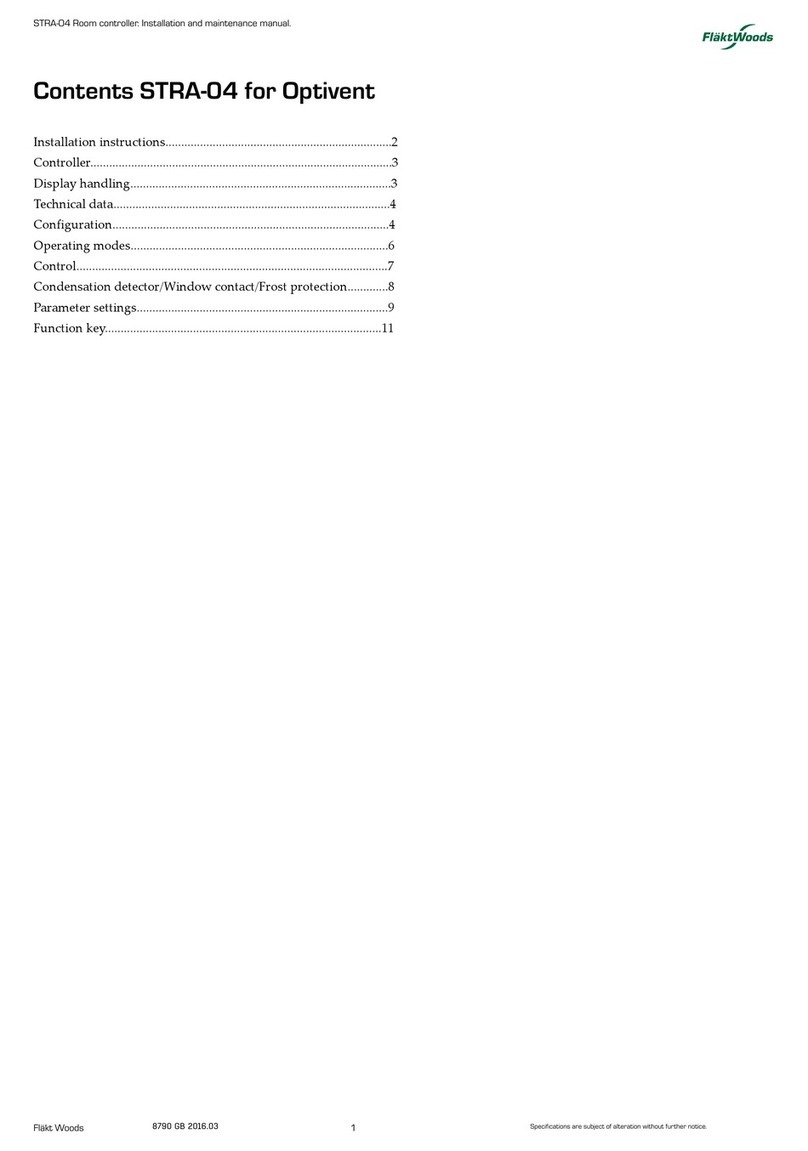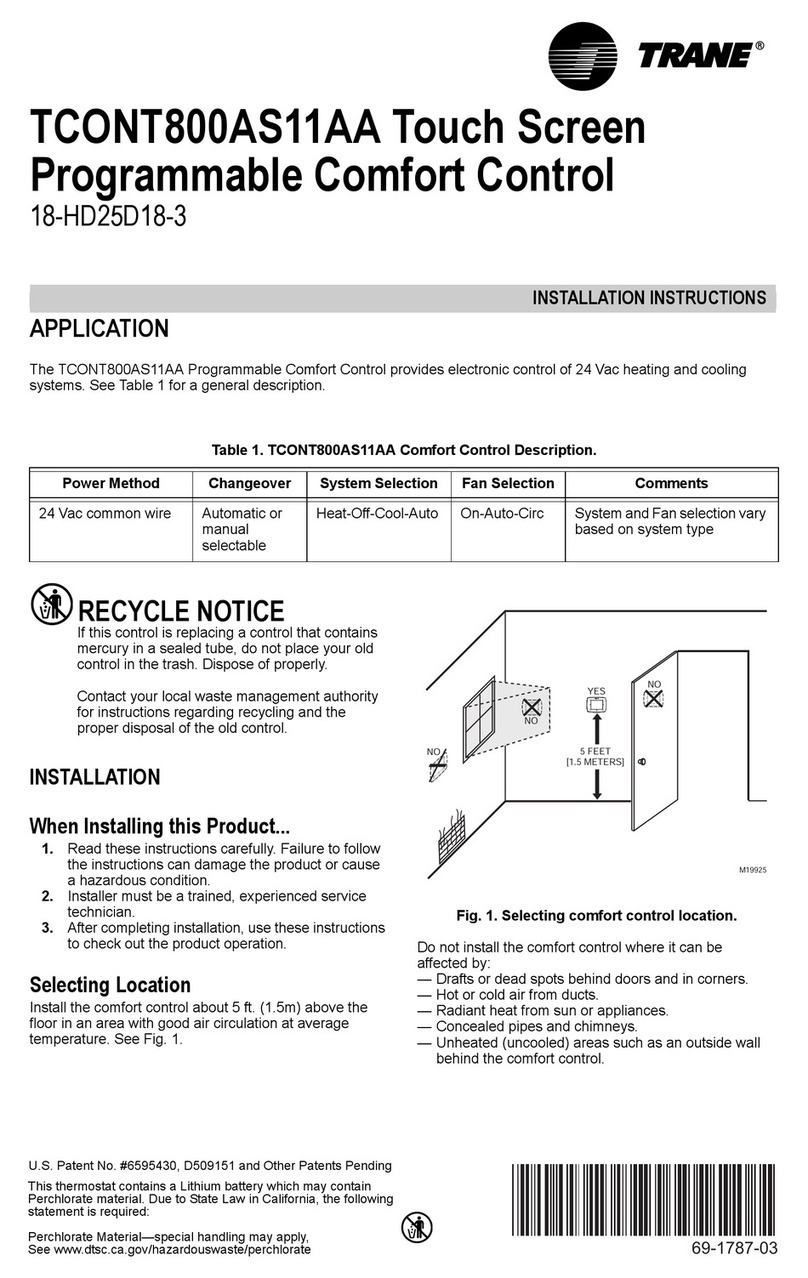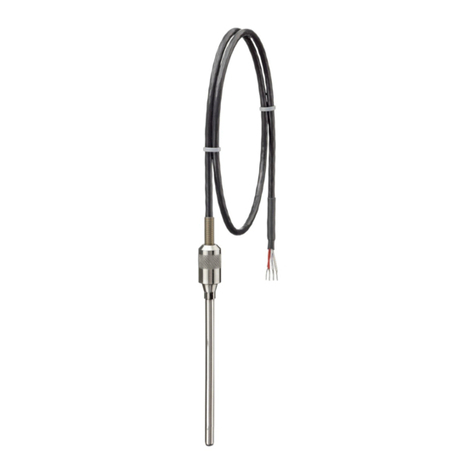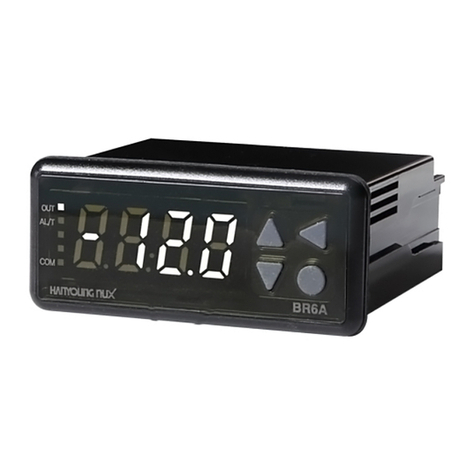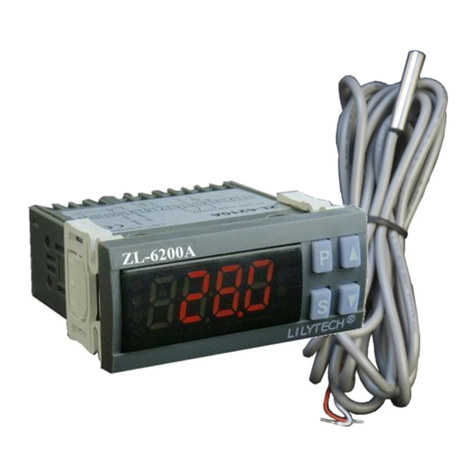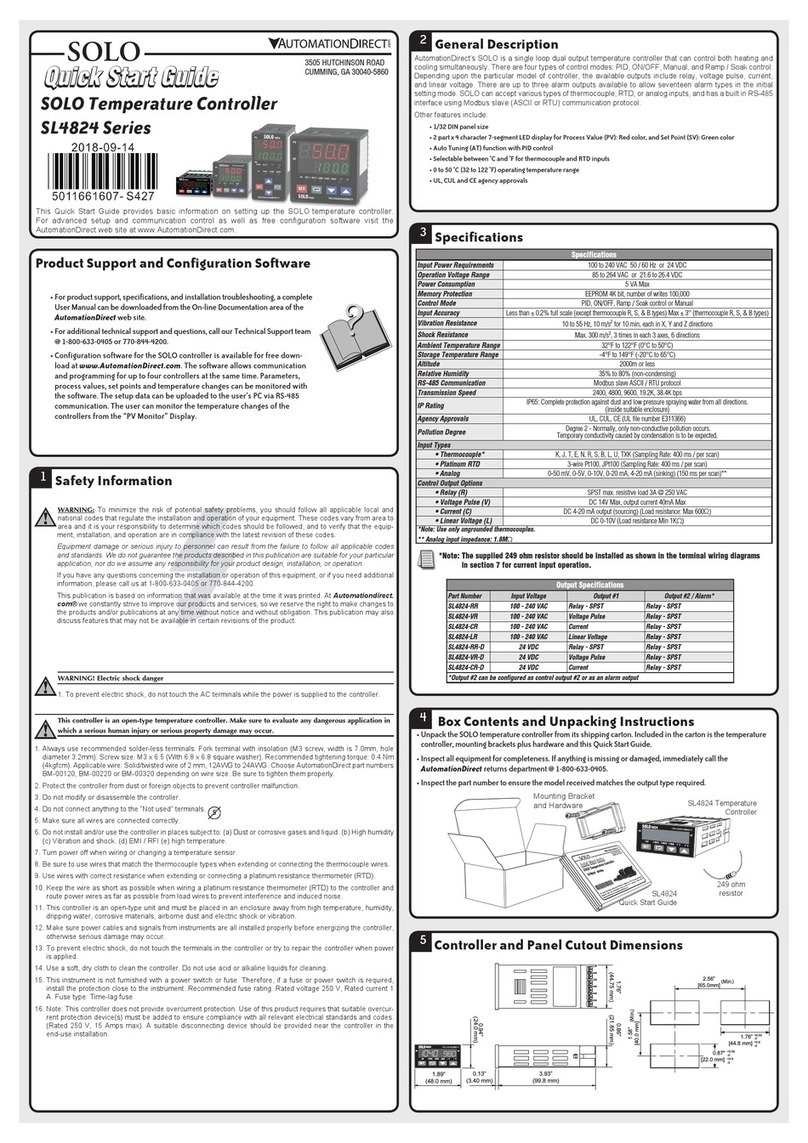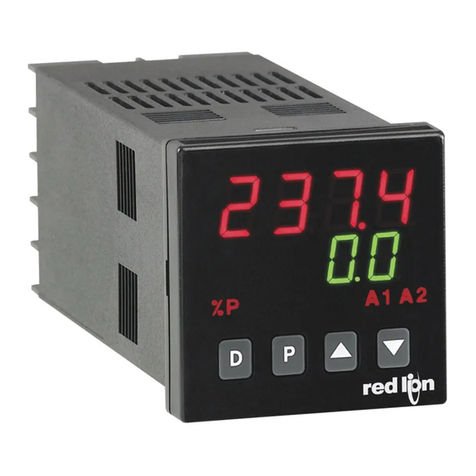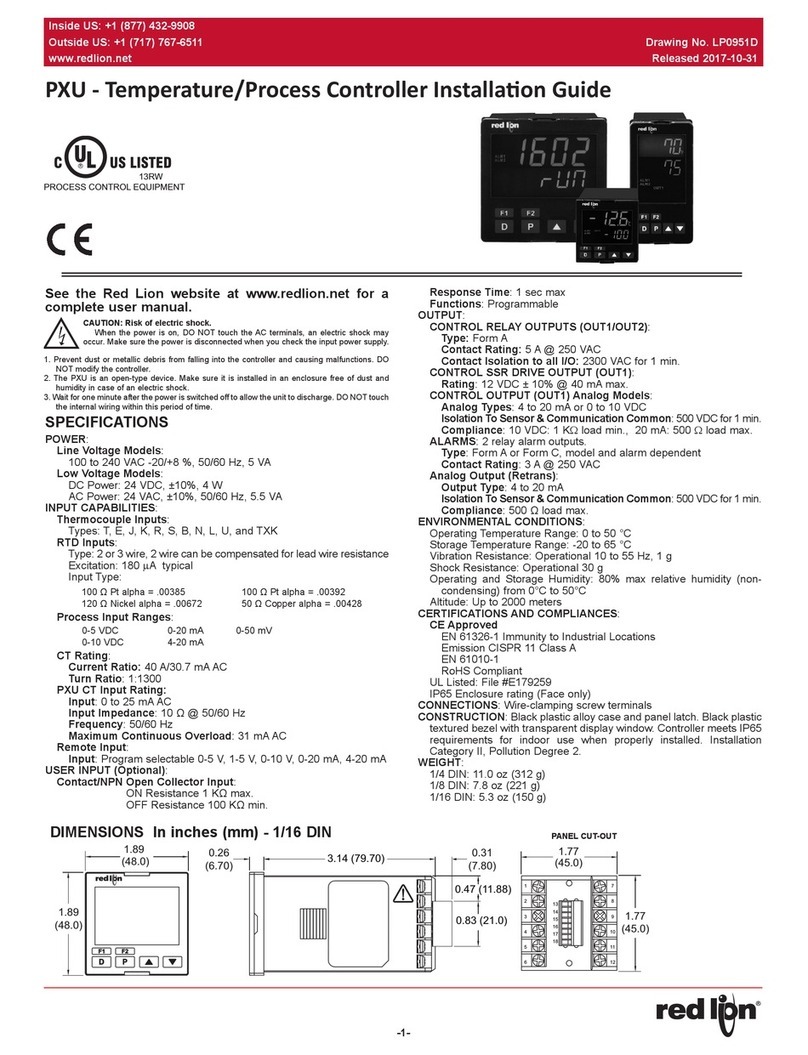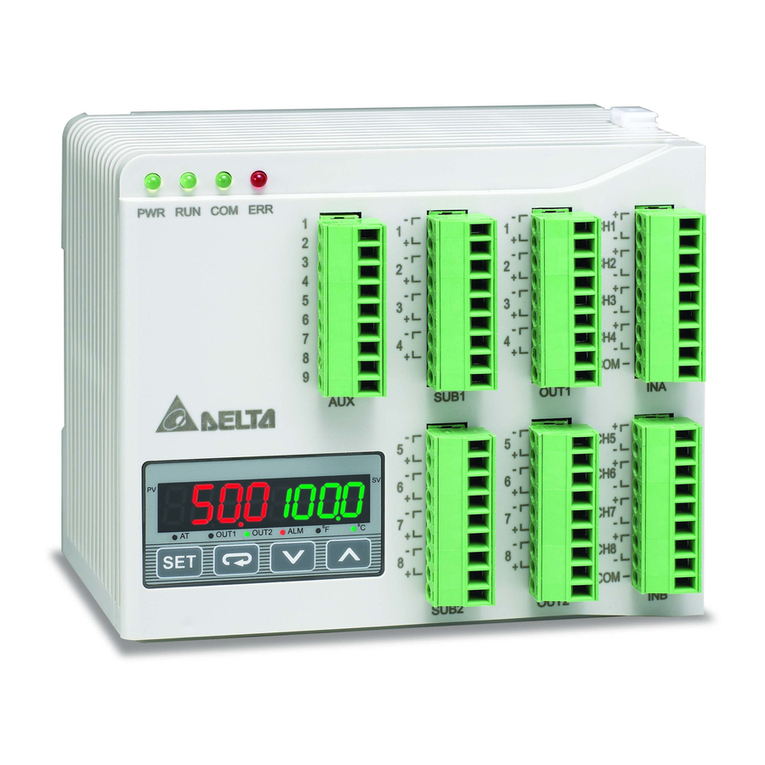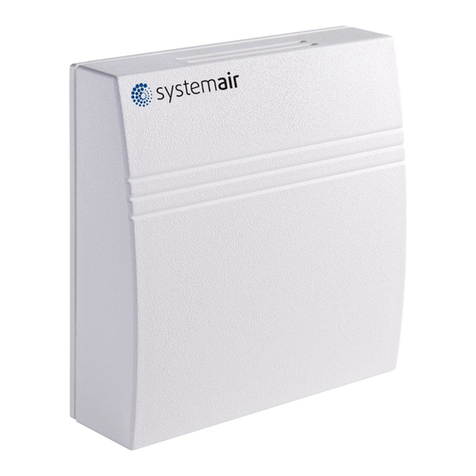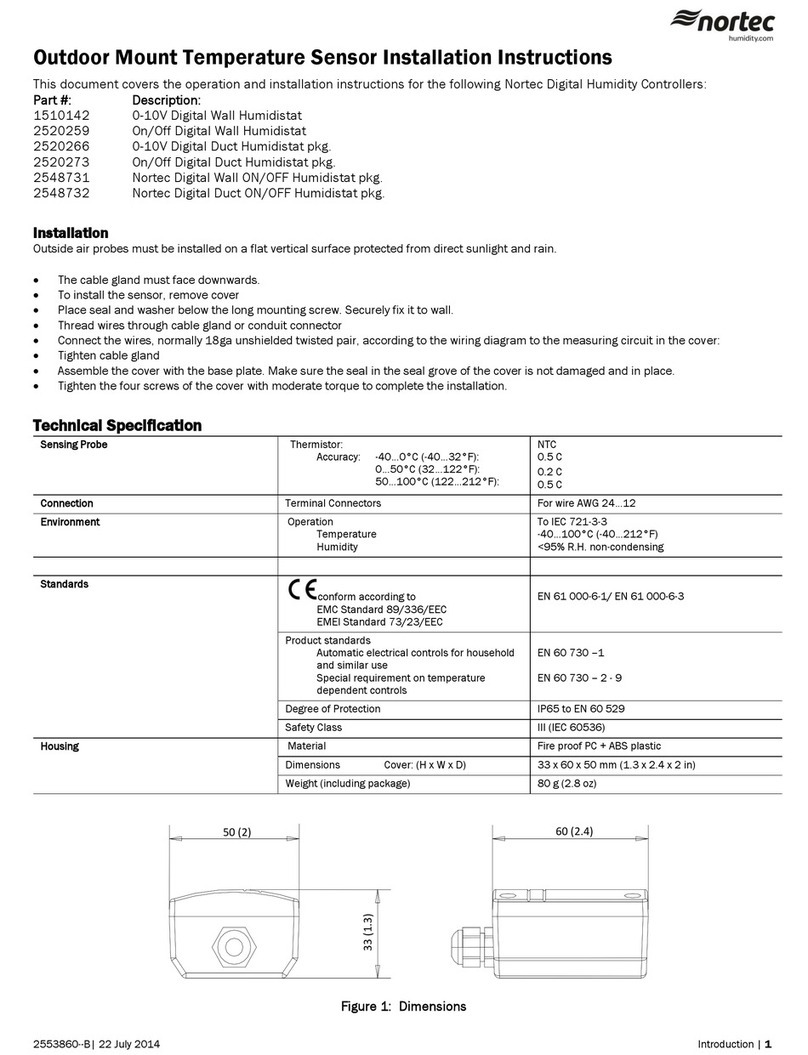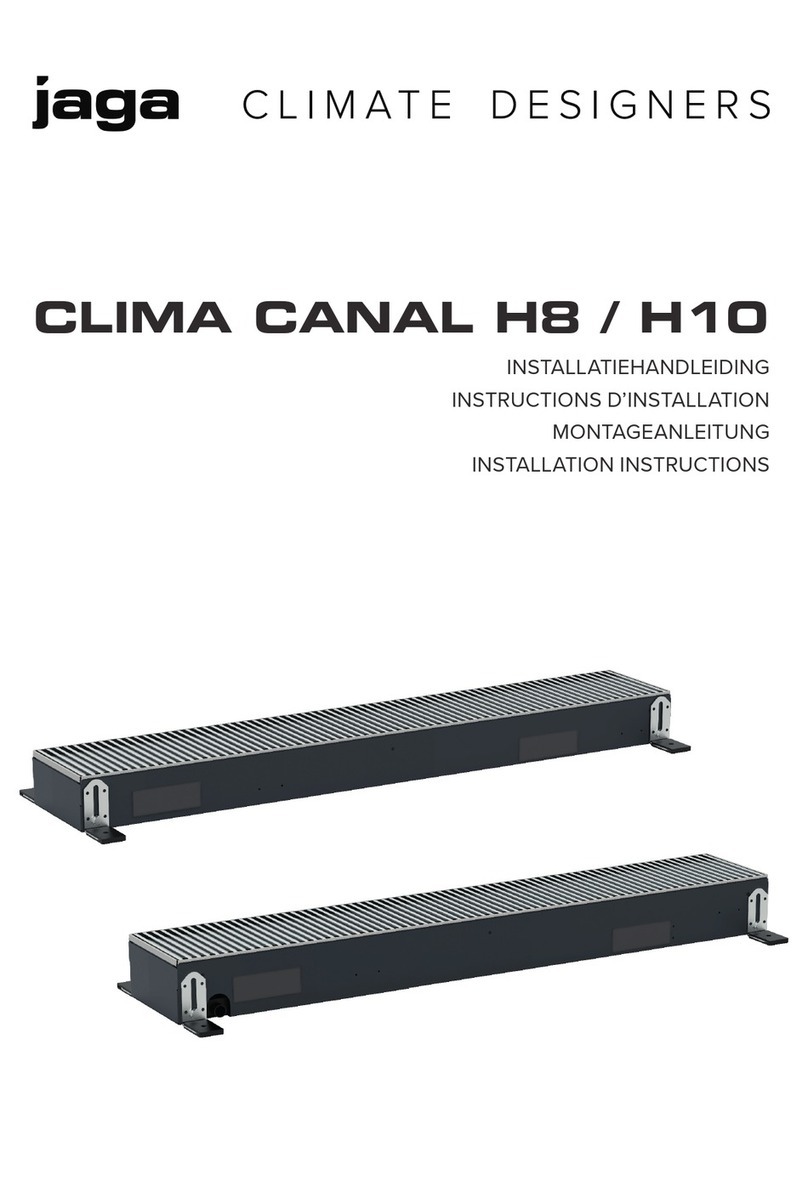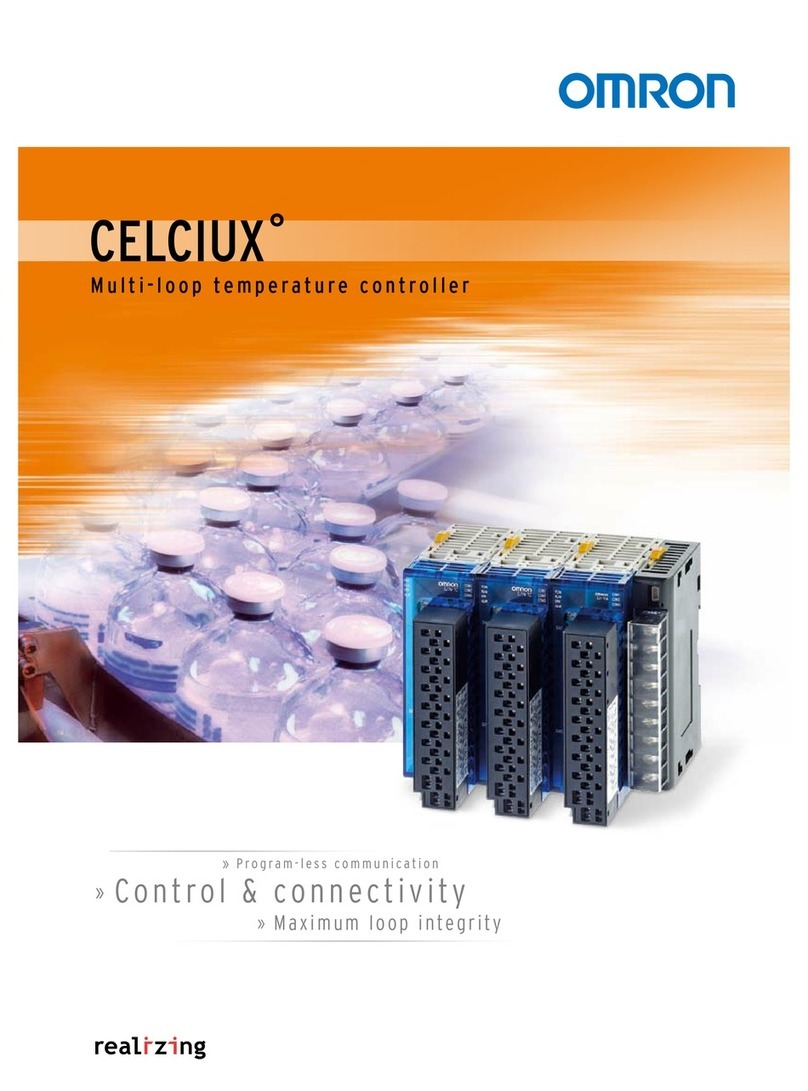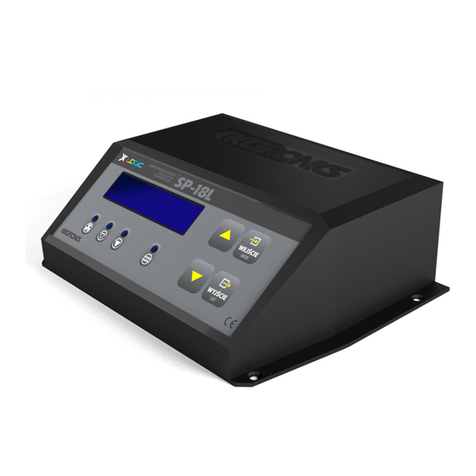flakt woods TWIN WHEEL SYSTEM Instruction Manual

AIR COMFORT
AIR TREATMENT
8877 GB 2017.10.25
AIR COMFORT TWIN WHEEL SYSTEM
» ASSEMBLY AND INSTALLATION
Contents Page
Twin Wheel System 2
Twin Wheel Controls Cabling Guide 3
Using the controller 4
Configuration quick guide 5 - 8
Overview of the menu structure 9
General Notes Controls 10
Connection Twin Wheel and eQ control boxes 11
Twin Wheel Control box – Wiring diagram 12
Cabling locations 13 - 14
Installation and mounting GTH1-TW 15

Assembly and installation 2
Fläkt Woods 8877 GB 2017.10.25 Specifications are subject to change without further notice
TWIN WHEEL SYSTEM
The Twin Wheel system is designed to operate as a part of an
air handling unit, delivering a controlled temperature and
humidity level. In order for the unit to function with intended
purpose, it is strongly advised to carefully follow the installation
instructions found inside this manual.
The Twin Wheel system consists of:
• Hygroscopic rotary heat exchanger
• Cooling coil (Valve actuator not included. Must be 0-10 V)
• Sensible rotary heat exchanger
• Control Box with operators´ panel
• Combined temp./humidity sensor
• Prewired sensors and cabling
In order for the control system to operate, the components
listed above all require some form of either manual wiring,
connecting or installing. See the quick guide on page 4.
Signal cables required from the AHU/BMS controller are as
follows:
• Supply air set point signal cable. (0-10 V)
• Start signal cable
• Power supply cable for connecting to the TW controller
Optional AHU/BMS cable signals:
• External heater cable (Always connect to TW if external
heater is present)
• Cooling alarm cable.
• Pump cooling cable
• AHU Heater feedback signal cable.
• Alarm cable
• Alarm B cable
LIMITS OF RESPONSIBILITIES
Although Fläkt Woods has tested and reviewed the documenta-
tion within this manual, Fläkt Woods makes no warranty, neither
expressed nor implied, with respect to this documentation,
including its quality, performance, or fitness for a particular
purpose.
Fläkt Woods shall under no circumstances be liable for direct,
indirect, special, incidental or consequential damages arising
from the use or the inability to use information contained in this
manual.
As a part of Fläkt Woods’ continuous process of improvement,
we reserve the rights to modify or amend this information at its
discretion.

Assembly and installation 3
Fläkt Woods 8877 GB 2017.10.25 Specifications are subject to change without further notice
TWIN WHEEL SYSTEM
TWIN WHEEL CONTROLS CABLING GUIDE
1. Locate the cabling for the temperature sensors GT3-TW,
GT4-TW and GT11-TW. See picture on pages 11-12.
2. Insert the fast connector for GT3-TW on the control panel.
Position M X5, see page 10.
3. Insert the fast connector for GT4-TW on the control panel.
Position M X1, see page 10.
4. Insert the fast connector for GT11-TW on the control panel.
Position X4 M, see page 10.
5. Locate the cabling for VVX1-TW and VVX2-TW. (Rotors).
See picture on page 11-12. Be careful not to mix up the
connection of the two rotors, since it would cause faulty
operation of the TW unit.
6. Insert the fast connectors for VVX1-TW.
Terminal block L N PE and 19-22 as indicated on page 10.
7. Insert the fast connectors for VVX2-TW.
Terminal block L N PE and 23-26 as indicated on page 10.
8. Locate the separately delivered combined temperature/
humidity sensor (GTH1-TW), see pages 11-12.
9. Mount the sensor as shown in the description on page 13.
10. When the GTH1-TW sensor is mounted to the AHU. Connect
the cables to the fast connector 11-14 as shown on the
picture on page 10. Be sure to check that the interlacing
between G0 and MS in the humidity sensor is in place.
Should it be missing it has to be interlaced.
11. Locate the valve actuator for the cooling coil (SV2-TW).
12. Connect the cabling for SV2-TW to the fast connector 15, 17,
18. See picture on page 10.
13. Locate the cabling needed from the AHU controller
(described on page 1). See drawing on page 10.
14. Connect the AHU controller supply air set point.
Position X8 M, see page 10.
15. Connect the AHU controller start signal.
Position M D1, see page 10.
16. If present, Connect the AHU cooling alarm signal.
Position D4 M, see page 10.
17. If present, Connect the Pump cooling signal.
Position Q1, see page 10.
18. If present, Connect the signal for external heater.
Position Q2, see page 10.
19. If present Connect the signal for Alarm.
Position Q3, see page 10.
20. If present Connect the signal for Alarm B.
Position Q4, see page 10.
21. Locate the operators’ panel for TW.
22. Insert the fast connector for the operator’s panel.
See drawing on page 10.
23. Locate the power supply intended for use with TW.
24. Connect the power supply cabling together with the main
isolator to the TW terminal. See picture on page 10.
The cabling is now complete. Switch on the power. The
operator’s panel should lit up after about two seconds and
you can move on to configuring the TW controller.

Assembly and installation 4
Fläkt Woods 8877 GB 2017.10.25 Specifications are subject to change without further notice
TWIN WHEEL SYSTEM
USING THE CONTROLLER
1. Display
Display of readings and settings
2. Info button
Press to access the
Main index
• Off = Stop, Re-cooling
• Green, steady glow =
Normal operation
• Green, flashing = Start
up, Night operation test,
Night cooling or Night
heating/night cooling
• Orange, steady glow =
Emergency stop and
alarm with stop
• Orange, flashing = Fire
damper exercising
from Climatix
• Alternating green/
orange = Manual
operation
3. ESC button
• Press to return to previous menu/page
• Press to cancel ongoing editing of a value
5. Knob
Turn knob clock-
wise /anticlockwise to
advance or move back
in the menus. Press
the button to enter a
menu or to be able to
change a value after
reaching it. Turn knob to
change the value. Hold
the knob pressed in for
direct access to the
Password Enter Menu
in case the value you
want to change requi-
res password entry.
4. Alarm button
Function: see alarm
acknowledge
• Red, flashing = alarm.
• Red, steady glow =
alarm acknowledged
but remains in effect
Note!
In the quick guide, the command for “navigation/
browsing” is from here on replaced by the
symbol “g”
Navigating is done by turning the knob (5). Turn to move the
marker to the desired row. Pressing the knob confirms the
selected value. To alter a parameter the knob is turned to
the desired value. Confirm the choice by pressing the knob.
Turning the knob with higher intensity enables the numeric
values to be selected in different steps.

Assembly and installation 5
Fläkt Woods 8877 GB 2017.10.25 Specifications are subject to change without further notice
TWIN WHEEL SYSTEM
CONFIGURATION QUICK GUIDE
Configuring through the HMI
If the controller has been supplied in non-configured condition,
it can be configured through a three step process in the HMI. This
process guides the user through all the essential parameters.
Configuration is carried out under the
MAIN INDEX ÚCONFIGURATION
Service password is needed.
START PAGE ÚMAIN INDEX ÚCONFIGURATION
1. Install Twin Wheel and all of its components according
to the installation instruction.
2. Switch on the power for the AHU and TW controller.
The display will be enabled after a few seconds. Go to the
configuration overview.
MAIN INDEX ÚCONFIGURATION
Then press Configuration 1 to start the first step of the
configuration process. The parameters that are set here
will have an effect on the subsequent configuration.
• Use the knob (5) to move the cursor to the required
parameter.
• Press down the knob (5) to change the value.
• Turn to the required value.
• Confirm your choice by pressing the knob (5).
When no more settings are left on the page, move the
cursor to Configuration 1 and enter Done. Then restart
the controller via “Reset required”, enter Execute. The
controller will then automatically restart.
3. The next time the user navigates to Configuration,
verify that Configuration 1 is set to Done. Then carry out
the same procedure for Configuration 2.
4. The input and output signals can purely physically
be connected in Configuration IO’s. Restart the AHU
through Reset required!
5. Now all you have left is to set the time schedules, required
set point and enable possible extra functions.
Reset/save commissioning and factory preset settings
It is possible to reset the controller back to its original
factory settings, Par factory load, and the commissioning
settings, Par service load, provided that the commissioning
settings have been saved, Par service save.
MAIN INDEX ÚSYSTEM OVERVIEW ÚSAVE/RESTORE
NAVIGATING THE MENUS
Operation
START PAGE
In order to manually start or stop the Twin Wheel unit the
command “Manual operation” found in the start page is used. In
the Auto position the Twin Wheel is controlled by a digital input.
Operation Status
START PAGE ÚMAIN OVERVIEW
In the menu “Main overview” the status of the relevant set points
and actual values are presented. The status of output signals to
cooling, sensible rotor and hygroscopic rotor etc. can be read.
Alarms
Alarms are indicated by a flashing LED on the alarm button (4).
To view the alarm in the display, press the alarm button (4) once.
To view the entire alarm list, press alarm button (4) once again.
The alarm is presented in text in the alarm list. Use the knob (5)
to navigate through the alarm list. You can circulate in the alarm
menus by repeatedly pressing the alarm button as follows:
ALARM LIST DETAIL ÚALARM LIST ÚALARM HISTORY
ÚSETTINGS ÚALARM ÚLIST DETAIL ... Ú
Parameter Remark
Off Unit is shut down
Winter Temperature control
Summer Temperature control and
humidity control when needed
Stop Unit shut off from external input

Assembly and installation 6
Fläkt Woods 8877 GB 2017.10.25 Specifications are subject to change without further notice
TWIN WHEEL SYSTEM
Alarm acknowledgement
Alarms are acknowledged by pressing the alarm button (4)
twice. Confirmation/resetting of alarms, Acknowledge, are
show in the top of the alarm list where the numbers of alarms
are also shown. Press the knob (5) and select Active to reset an
alarm. The LED will be lit with a steady glow if an alarm remains
in effect.
Date and time
MAIN INDEX ÚSYSTEM OVERVIEW
Login
START PAGE ÚPASSWORD ENTER
Holding the knob (5) pressed down for about 2 seconds enables
a quick link to the log in screen.
Example: Setting the year
The following example shows how the current year is altered in
the controller.
1. Place the marker on the row for “Main Index” through turning
the knob (5).
2. Then press the knob down once so that the next level in the
menu structure is activated.
3. Move the marker to the row “System Overview” through
turning the knob (5) and press it down.
4. Place the marker on the date and time on the upper row.
5. Press the knob down to start editing the value.
To edit the year in the date field, press the knob (5) twice.
6. The value can now be changed through rotating the knob (5).
7. Confirm the change through pressing the knob (5) once.
8. Press ESC button (3) to leave the edit mode.
Parameter Remark
dd.mm.yyyy Date
hh:mm:ss Time
Parameter Remark
**** Password is 1000
SET POINTS AND ADJUSTMENTS
Summer/winter operation
The operation modes Summer/winter is per default set to follow
the relationship between the humidity set point and the outdoor
temperature. It is also possible to set a specific date for this
occurance if desired.
MAIN INDEX ÚGLOBAL FUNCTIONS Ú
SU/WI CALCULATION
Parameter Format Stand.value Remark
Date/Time Summer hh:mm dd.m Time for summer operation to start.
Date/Time Winter hh:mm dd.m Time for winter operation to start.
Time Constant h 0 Delay for operation mode change.
Outs.tmp diff summer °C 2 Difference between the supply air condensation temperature
and then outside air for summer activation.
Outs tmp hys winter Hysteresis for operational mode switch between winter
mode and summer mode.

Assembly and installation 7
Fläkt Woods 8877 GB 2017.10.25 Specifications are subject to change without further notice
TWIN WHEEL SYSTEM
Terms for summer
Outdoor temp > condensation point for the humidity set point –
Outs tmp diff summer.
Terms for winter
Outdoor temp < condensation point for the humidity set point –
Outs tmp hys winter.
Alarm inputs
Settings for alarm inputs are adjusted under Digital inputs at
respective function.
MAIN INDEX ÚUNIT ÚINPUTS ÚDIGITAL INPUTS
Alarm outputs
Settings for alarm outputs are adjusted under Digital outputs.
MAIN INDEX ÚALARM HANDLING
ROTORS
Twin Wheel is equipped with two rotors. One sensible (heat
transfer) and one hygroscopic (moist and heat transfer) rotor.
Hygroscopic rotor
For winter mode, the hygroscopic rotor is first in the heating
sequence. It is blocked from the heating sequence during
summer mode, where only the sensible rotor is used. In the
cooling sequence however, the hygroscopic rotor is used
whenever possible. For cooling recovery, the hygroscopic rotor
is run at 100 %. The condition for cooling recovery to start, is
when the outdoor temperature is 2 degrees (default) higher than
the extract air.
Settings for rotors are found at:
MAIN INDEX ÚUNIT ÚTEMP CONTROL Ú
HEAT RECOVERY
Parameter Remark
Alarm output 1 A-alarm output, NO, adjustable
Alarm output 2 B-alarm output, NO, adjustable
Sensible rotor
The sensible rotor regulates so that the supply air temperature
set point is withheld. Under conditions when the sensible rotor
fails to reach the set point, the hygroscopic rotor is used
(if allowed to start).
Rotor settings are found under:
Temperature control
The temperature sequence is independent of the humidity
sequence. The temperature sequence uses both rotors (under
the condition that the current operating mode allows it). When
cooling is needed, the cooling coil is used. When the conditions
for cooling recovery are met, the hygroscopic rotor is used. If the
temperature set point is not reached the controller can call for
external heating to start through a digital output.
Temperature Set Points
The Twin Wheel receives it’s supply air temperature set point
from the AHU as an analogue input. Settings in the controller
regarding how this signal will be translated to a temperature are
done via External Set Point. Log in at service level is required.
MAIN INDEX ÚUNIT ÚSETPOINTS/SETTINGS Ú
ALL SETTINGS ÚEXTERNAL SET POINT
The temperature set point for cooling is a temperature offset
(dead zone) from the supply air temperature set point. This
setting is set in °C.
MAIN INDEX ÚUNIT ÚSETPOINTS/SETTINGS
Parameter Value Remark
Ext.stpt curve Y1 0 °C Temperature set point 0
as VDC shall represent.
Ext stpt curve Y2 30 °C Temperature set point 10
VDC shall represent.
Parameter Value Remark
Set Point dead zone
cooling
2 °C Dead zone between
heating and cooling

Assembly and installation 8
Fläkt Woods 8877 GB 2017.10.25 Specifications are subject to change without further notice
TWIN WHEEL SYSTEM
Temperature Deviation
Supervision of temperature error is possible to activate/
deactivate, a lower limit and a maximal difference is
configurable.
MAIN INDEX ÚUNIT ÚTEMP CONTROL Ú
TMP SETPOINTS À SPLY TMP DEV ALARM
Operating Indication
The operating indication is not activated as standard. Activation
is done in Configuration 2 with the parameter AUX. Operate.
Ind. Log in at service level is required. The operating indica-
tion output is selected by the parameter, Op mode outp select.
MAIN INDEX ÚUNIT ÚAUXILIARY
Humidity control
Humidity control is only active in summer mode. The absolute
humidity content is calculated via the relative humidity sensor
placed together with its temperature sensor. Humidity control
is configurable to use either an absolute humidity set point or a
Parameter Value Remark
Min limit 10.0 °C Setting of the lowest
temperature.
Max.deviation 10.0 °C Setting of the maximum
tempera ture deviation.
Start up delay 60 sec Setting of delay at start
up.
Parameter Remark
Off Operating indication for manually
shut down TW function
Winter Operating indication for winter mode
Summer Operating indication for summer
mode
Manual Operating indication when TW is set
to manual operating mode
Stop Operation set to stop. For ex. External
stop
Run Normal operation
TempDev Temperature deviation occurs
HumDev Humidity deviation occurs
HumOverStpt Current humidity over set point
HumUnderStpt Current humidity under set point
relative humidity set point. This is settable in the configuration
through the parameter Humidity control.
Dehumidification (Cooling)
When dehumidification is needed, the dehumidification controller
controls the cooling valve to cool the supply air between the
rotors. The controller which controls cooling is therefore not the
same as in the heating and humidity sequence and the control
signal meaning that the control signal can behave in different
ways ( can have different parameters). The control signal to the
cooling valve is the maximal output signal of both the internal
controllers.
Humidity Set Points
The humidity set point is determined in order to reach the
desired moisture content in the supply air, either as absolute
or relative content.
MAIN INDEX ÚUNIT ÚSETPOINTS/SETTINGS
Humidity Deviation
Supervision of humidity error can be activated/deactivated.
Lower limit for deviation is blocked. When the maximum
deviation is exceeded the sensible rotor is blocked
and external heating takes over heating.
Parameter Value Remark
Dehum stpt rel 50 % rH Configuration of relative
humidity set point.
Dehum stpt abs 8 g/kg Configuration of abso-
lute humidity set point.
Note!
The values refers to %rH for relative control
and g/kg for absolute control.
Parameter Value Remark
Max. deviation 5 g/kg alt.
20 % rH
Setting for maximum
humid. error
Start up delay 60 sek Setting for delay of
function at start-up

Assembly and installation 9
Fläkt Woods 8877 GB 2017.10.25 Specifications are subject to change without further notice
TWIN WHEEL SYSTEM
uStart page...................................................................................First menu at start up. Shows operational mode and actual values for temperatures
uPassword enter ...........................................................Password is: 1000
uMain Index ..........................................................................The main index
uUnit........................................................................................Status of settings for Twin Wheel
uMain overview...................................................All actual and set point values and control signal status
uInputs...........................................................................Status: Analogue and digital inputs. Alarm status
uOutputs ......................................................................Status: Analogue and digital outputs
uOperating mode..............................................Operational information
uActual....................................................................Current operating mode
uManual operation....................................Operating mode from mode switcher
uFrom BMS........................................................Operating mode from BMS
uSetpoints/Settings.....................................Set points for temperature and humidity control
uTemp control.......................................................Control of the heating/cooling sequence
uTmp setpoints.............................................Set points and dead zones for temperature control
uHeat recovery..............................................Status and settings for the hygroscopic rotor
uHeat recovery 2........................................Status and settings for the sensible rotor
uExtra htg demand...................................Status and settings for external heating
uCooling.................................................................Status and settings for cooling
uHumidity control.............................................Control of the dehumidification sequence
uSetpoints...........................................................Set points for the dehumidification controller
uDehumidification.....................................Status and settings for dehumidification
uAuxiliary...................................................................Status and settings for operating indication
uLoop controllers..............................................Status and settings for the current controllers
uOperating hours..............................................Measured operating time for cooling and external heating
uGlobal functions....................................................Global functions
uSu/Wi calculation........................................Settings for summer and winter mode
uAlarm handling......................................................Alarm acknowledgement and alarm outputs
uSystem overview.................................................Time, language, software information, save/restore settings, communication
uAll system settings.....................................HMI, password handling, diagnose
uOverview I/O config/raw values......Overview of activated I/O’s and their raw values
uConfiguration............................................................HMI Configuration
uConfiguration 1..................................................Overall functions, accessories, sensors
uConfiguration 2.................................................Choice of functions and accessories
uConfiguration......................................................IO’s allocation of physical inputs and outputs
Menu heading Remark

Assembly and installation 10
Fläkt Woods 8877 GB 2017.10.25 Specifications are subject to change without further notice
TWIN WHEEL SYSTEM
GENERAL NOTES CONTROLS
Reaching the supply air set point
The supply air set point, delivered by the AHU controller to the
Twin Wheel controller may have to be calibrated by measuring
any eventual temperature rises past the TW unit, (fan, duct etc).
If the AHU controller is equipped with a sensor giving feedback
to the system, this will solve itself automatically, since the AHU
controller will feed the TW controller with the correct value at all
times.
Note!
Adjustable seals are fitted between the
casing and the rotors on both sides, in order
to minimize the leakage between extract
and supply air. It is strongly advised to
carefully inspect and tighten the seals if
needed. Excessive leakage may interfere
with the functionality of the system.
Rotors

Assembly and installation 11
Fläkt Woods 8877 GB 2017.10.25 Specifications are subject to change without further notice
TWIN WHEEL SYSTEM
24VAC
Pump cooling
Ext. heater GT4 Extract air
GT1 Supply air
GH1 Supply air
GT11 Cooling
GT3 Outdoor air
Set point
Alarm
Alarm B
VVX1
VVX2
VVX1 Alarm
VVX2 Alarm
Cooling Alarm
GP1 Alarm
Ethernet
Operators panel
CONNECTION TWIN WHEEL AND EQ CONTROL BOXES
Processbus (PB)
CE+ is connected to KNX+
CE- is connected to KNXConnection

Assembly and installation 12
Fläkt Woods 8877 GB 2017.10.25 Specifications are subject to change without further notice
TWIN WHEEL SYSTEM
White
Orange
Purple
Grey
Blue
Red
Brown
Green
Blue
Red
BlueRed
Pump cooling
Ext. heater GT4 Extract air
GT1 Supply air
GH1 Supply air
GT11 Cooling
GT3 Outdoor air
Set point
Alarm
Alarm B
VVX1
VVX2
VVX1 Alarm
VVX2 Alarm
Cooling Alarm
GP1 Alarm
Ethernet
Operators panel
Transformer
Red
Red Yellow
Yellow
External fuse 16 A
Cabinet
heater
Main isolator
Temperature sensor
after coil
Temp. sensor
Temp. sensor
outdoor air
extract air
TERMINAL
A4
SV2 - TW Actuator
cooling coil
GTH1 - TW Temp/
Humidity sensor
supply air
VVX2 - TW Rotary heat exchanger.
Non hygroscopic.
VVX1 - TW Rotary heat exchanger.
Hygroscopic.
Yellow
Interlaced
TWIN WHEEL CONTROL BOX – WIRING DIAGRAM

Assembly and installation 13
Fläkt Woods 8877 GB 2017.10.25 Specifications are subject to change without further notice
TWIN WHEEL SYSTEM
VVX1
-TW
VVX2
-TW
VVX2
-TW
VVX1
-TW
SV2
)** )**
)* )*
Supply Air
Extract Air
External
VVX1
-TW
VVX2
-TW
VVX2
-TW
VVX1
-TW
SV2
)** )**
)* )*
External
Supply Air
Extract Air
13
5
2
4
5
1
2
3
4
6
6
CABLING LOCATIONS
Supply air ground floor, inspection side right
1. RHE1-TW cabling. (Hygroscopic rotor)
2. GT4-TW cabling. (Extract air sensor)
3. RHE2-TW cabling. (Sensible rotor)
4. GT3-TW cabling. (Outdoor air sensor)
5. GT11-TW cabling. (Temp. after coil sensor)
6. GTH1-TW cabling. (Temp./humidity sensor supplied as loose accessory)
Supply air ground floor, inspection side left
1. RHE1-TW cabling. (Hygroscopic rotor)
2. GT4-TW cabling. (Extract air sensor)
3. RHE2-TW cabling. (Sensible rotor)
4. GT3-TW cabling. (Outdoor air sensor)
5. GT11-TW cabling. (Temp. after coil sensor)
6. GTH1-TW cabling. (Temp./humidity sensor supplied as loose accessory)
VVX1
-TW
VVX2
-TW
VVX2
-TW
VVX1
-TW
SV2
)** )**
)* )*
Supply Air
Extract Air
External
VVX1
-TW
VVX2
-TW
VVX2
-TW
VVX1
-TW
SV2
)** )**
)* )*
External
Supply Air
Extract Air
13
5
2
4
5
1
2
3
4
6
6

Assembly and installation 14
Fläkt Woods 8877 GB 2017.10.25 Specifications are subject to change without further notice
TWIN WHEEL SYSTEM
Supply air top floor, inspection side right
1. RHE1-TW cabling. (Hygroscopic rotor)
2. GT4-TW cabling. (Extract air sensor)
3. RHE2-TW cabling. (Sensible rotor)
4. GT3-TW cabling. (Outdoor air sensor)
5. GT11-TW cabling. (Temp. after coil sensor)
6. GTH1-TW cabling. (Temp./humidity sensor supplied as loose accessory)
Supply air top floor, inspection side left
1. RHE1-TW cabling. (Hygroscopic rotor)
2. GT4-TW cabling. (Extract air sensor)
3. RHE2-TW cabling. (Sensible rotor)
4. GT3-TW cabling. (Outdoor air sensor)
5. GT11-TW cabling. (Temp. after coil sensor)
6. GTH1-TW cabling. (Temp./humidity sensor supplied as loose accessory)
4153
2
3514
2
VVX1
-TW
VVX2
-TW
VVX2
-TW
VVX1
-TW
SV2
Extract Air
Supply Air
External
6
VVX1
-TW
VVX2
-TW
VVX2
-TW
VVX1
-TW
SV2
Extract Air
Supply Air
External
6
4153
2
3514
2
VVX1
-TW
VVX2
-TW
VVX2
-TW
VVX1
-TW
SV2
Extract Air
Supply Air
External
6
VVX1
-TW
VVX2
-TW
VVX2
-TW
VVX1
-TW
SV2
Extract Air
Supply Air
External
6

Assembly and installation 15
Fläkt Woods 8877 GB 2017.10.25 Specifications are subject to change without further notice
TWIN WHEEL SYSTEM
INSTALLATION AND MOUNTING GTH1-TW
The GTH1 sensor is to be mounted in the supply air. If placed in the
AHU unit, it should be on a panel in an empty section. The sensor
could also be placed in the supply air duct. The location is depen-
dant on how the AHU is set up. When the AHU or duct system isn’t
equipped with a heater, the sensor should be mounted after the
fan. If there is a heater and it’s located after the fan, the sensor
should be mounted as in figure 1. If the heater is placed before the
fan, the sensor should be mounted as in figure 2.
When choosing the location, make sure to place the sensor on a
safe distance from any heated surfaces, ergo not too close to the
fan or the heater. The sensor element should be placed as close
to the centre of the air stream as possible. The drill hole should be
carefully sealed to avoid leakage and faulty values.
The GTH1 sensor is IP-54 and durable down to -15 °C.
Figure 2Figure 1
Important!
Do not mount the GTH1 sensor after the heater
under any circumstances. This would have a
detrimental effect on the control sequences
and effectively destroy the intended function of
the unit.
Mounting position GTH1-TW Mounting position GTH1-TW
Table of contents
Other flakt woods Temperature Controllers manuals
